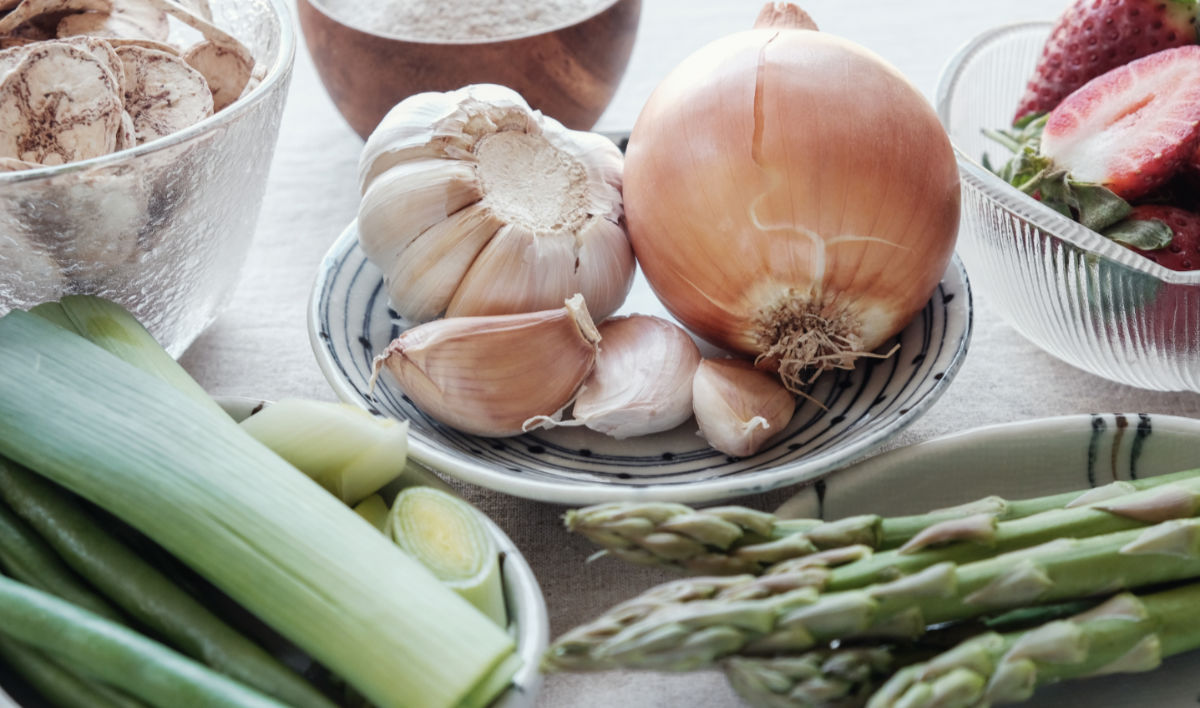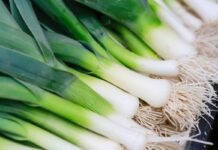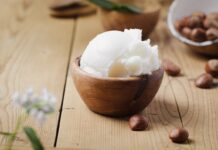- Probiotics vs prebiotics – discover the hidden benefits of maintaining healthy gut bacteria.
- How to pick and choose the best prebiotic food – including high fibre veg and fruits.
- 10 brilliant prebiotic foods to get you started – from onions and garlic to leeks and green bananas.
The discomfort of indigestion isn’t solely down to what, when, and how we eat. While overeating or late-night snacks can lead to bloating and stomach pain, there’s more going on in your gut than what you put in your mouth. Your gut is a complex, diverse microbiome teeming with microbes. Disrupt the balance of these healthy gut microbes, and you may suffer from indigestion and a weakened immune system. That’s where prebiotic foods come in.
Maintaining a healthy gut microbiome is crucial to overall wellness, and gut microbes play a critical role. Billions of these live bacteria live in your stomach, and they are vital in preventing issues with your gastrointestinal tract and maintaining an effective digestive system.
Having trouble sleeping? Try a banana before bed and 6 other brilliant foods to help you sleep.
Probiotics vs prebiotics
There are two ways to maintain a healthy gut microbiome – probiotics and prebiotics. Most people are looking to improve gut health reach for probiotic products such as yoghurts and probiotic drinks. Probiotic foods include kefir, sauerkraut, gherkins and Japanese miso. There are also dedicated probiotic products such as Yakult and Actimel. These are loaded with billions of live bacteria that help reinforce existing stomach microbes, making up for any gut microbe deficiencies.
Prebiotics are different. Rather than top-up existing microbes, prebiotics provides a ready source of foods that allow existing gut bacteria to thrive and grow. The benefit is that prebiotics allows your existing gut flora to flourish, helping maintain a healthy digestive system.
What are prebiotic foods?
Prebiotics exist in a wide variety of food. Starchy foods such as fibre-heavy food, plant fibres, vegetables and fruits are a rich source of prebiotics. Importantly, these starchy foods are laden with complex carbohydrates that can’t be digested by our body. This means they remain in the stomach and pass through to the digestive tract as vital food for existing gut bacteria and microbes.
There are many different types of prebiotic foods. An excellent healthy gut diet involves eating a range of various sources of prebiotics – effectively providing your gut bacteria with a balanced diet.
Prebiotic foods generally are:
- Non-digestible – This allows the complex carbohydrates and fibre to pass through the stomach without being digested by stomach enzymes and gastric acids.
- Have health benefits – Prebiotic foods must confer health benefits. One measure is that the prebiotic food results in more active gut bacteria, and allows numbers to increase. More active microbes can help improve digestion, boost your immune system and even help with the absorption of essential minerals crucial for your overall health.
- Can be used by gut bacteria – To qualify as a prebiotic, intestinal bacteria has to be able to make use of the complex carbohydrates. Microbes do this through fermentation or metabolising the prebiotic food.
How do prebiotics help maintain a healthy gut?
There are plenty of reasons to opt for prebiotic-rich food. Gut health plays a key role in your wellbeing, including improving your digestion by keeping your gut clean and your digestive system working smoothly. It’s not limited to digestive health, either. Better mineral absorption can enhance your intake of calcium, iron and magnesium – all crucial for bone and skeletal health.
Top 10 prebiotic foods
Prebiotic foods aren’t tricky to find – most supermarkets and home larders are packed with gut-friendly prebiotics.
It’s best to eat prebiotic foods raw as the fibre found in these foods can change during cooking, reducing its effectiveness and potency. However, prebiotics can lead to bloating and excessive gas, so lightly cooking food can be a sensible option for many.
1. Onions
Rich in the flavonoid quercetin and a great source of inulin, onions are a fantastic prebiotic. Quercetin may help protect against cancer according to some studies, while inulin can stimulate your body to produce butyrate, which helps protect the colon. Onions may help reduce bad LDL cholesterol and fats in your blood, known as triglycerides. A top tip is to peel as little of the onion before eating, as its prebiotic properties are more densely packed the closer to the surface. The good news for those worried about onion breath: you can safely cook onions, and they’ll retain their prebiotic goodness.
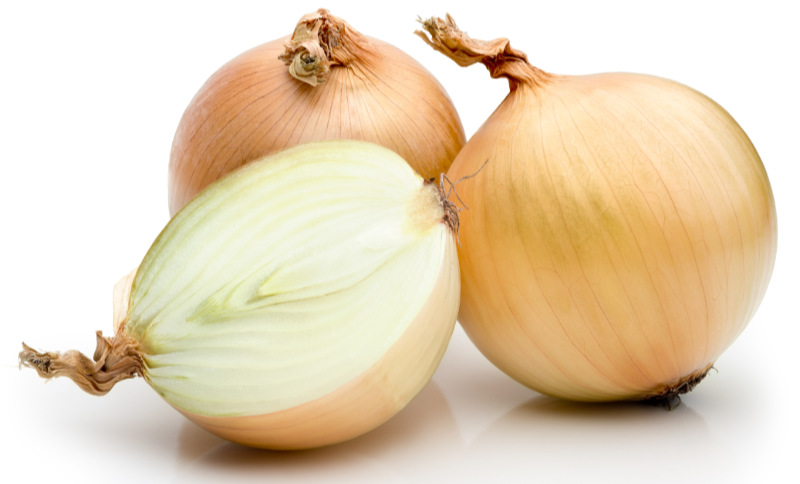
2. Garlic
Another breath-challenging prebiotic is the humble garlic bulb. As well as being an antioxidant with reported anti-cancer and anti-microbial effects, garlic helps foster helpful bifidobacteria in the digestive system. As a bonus, it is packed with manganese, selenium and vitamins C and B6, making it an all-round healthy choice. Add to main meals in moderation to prevent bad breath.
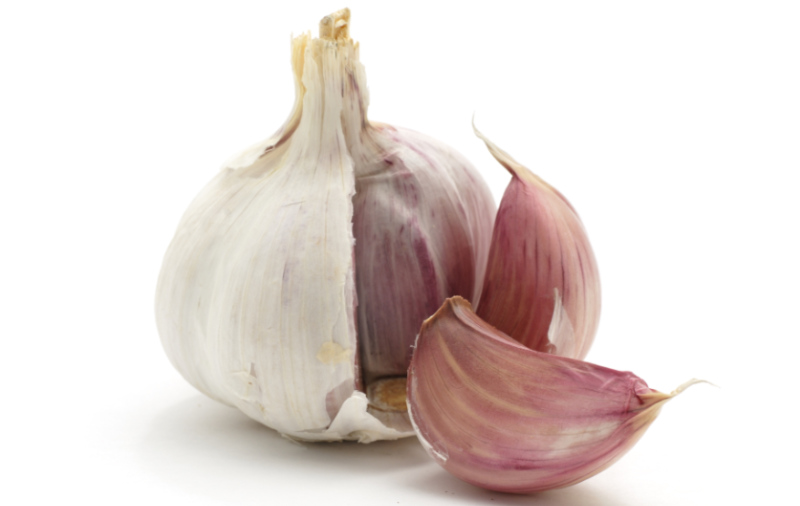
3. Leeks
Similar to garlic and onions, leeks are a gut-friendly fibre, rich in flavonoids. Eating leeks may also be beneficial in supporting your body’s response to oxidative stress, and breaking down fat from foods.
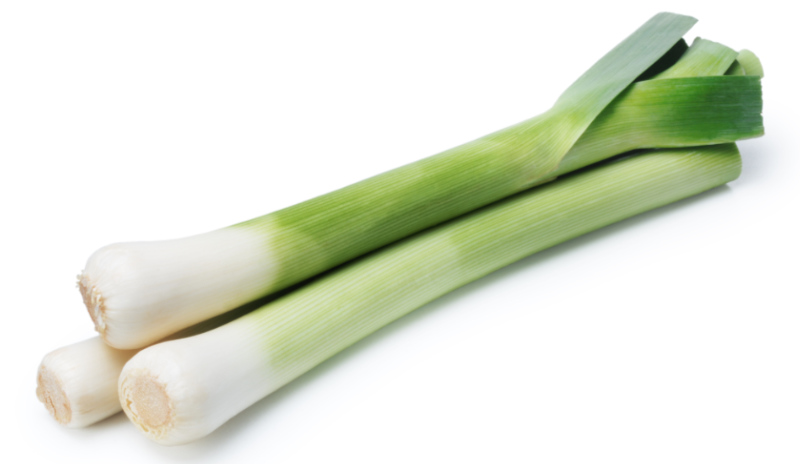
4. Bananas
Bananas are a fantastic go-to source for gut health. Skip the overly ripe yellow banana in favour of unripened green bananas to get the maximum in resistant starch and boost healthy gut bacteria. Green bananas can help reduce bloating. If you don’t fancy eating unripe bananas, and one gut-friendly tip is to add them to a smoothie and use green banana flour when baking.
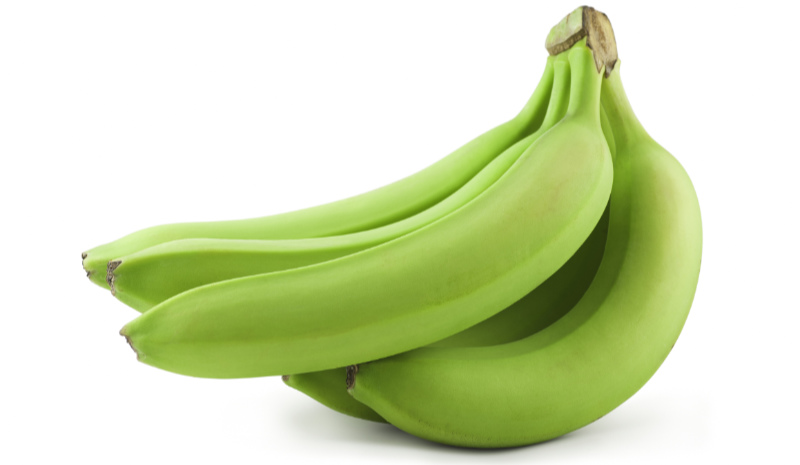
5. Oats
Starting the day with a bowl of oats is provides a brilliant way to get your digestive microbes off to the best start. There’s a lot of science to back up the power of oats for boosting gut health. Whole oats are loaded with beta-glucan fibre, which can help support healthy gut bacteria, reduce cancer risk, improve the regulation of blood sugars and lower bad LDL cholesterol. If that wasn’t enough, oats can slow digestion and offer antioxidant and anti-inflammatory properties due to their high levels of phenolic acid.
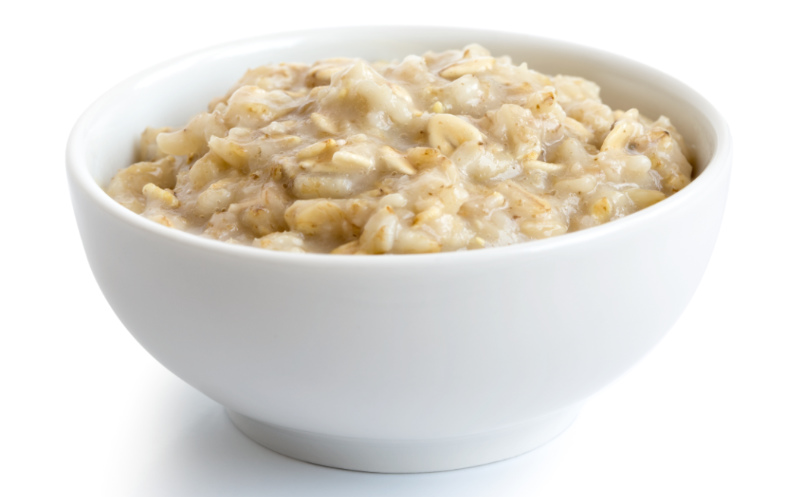
6. Apples
An apple a day may keep the doctor away – and also lower the number of harmful bacteria taking up residence in your gut. Around half the mass of an apple is pectin – a high fibre that works as a brilliant prebiotic. This can increase the body’s production of butyrate, a type of short-chain fatty acid that clears out harmful bacteria while providing food for helpful gut microbes. Even better, apples are a great source of polyphenol antioxidants that, combined with pectin, work in tandem to reduce LDL cholesterol levels, improve fat metabolism and may help reduce the risk of some cancers.
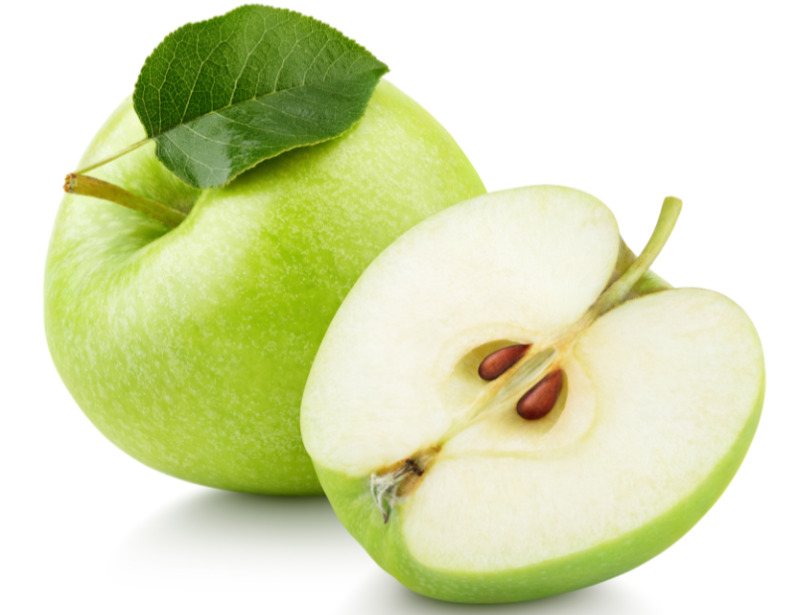
7. Jerusalem artichoke
A rich source of inulin, Jerusalem artichoke offer a whole range of health benefits in addition to boosting helpful gut bacteria as part of a diet rich in prebiotic foods. While they can increase the number of helpful microbes in the gut, they are also rich in thiamine, iron and potassium, helping increase muscle function and support your nervous system. Jerusalem artichokes have been found to help prevent diabetes and liver disease, as well as strengthen the immune system.
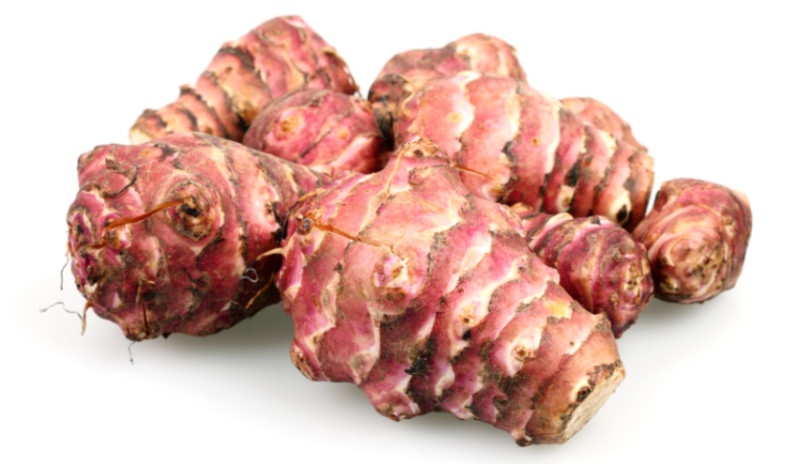
8. Asparagus
Packed full of antioxidants that can help reduce inflammation and may even help with anti-ageing, asparagus is around 3% inulin, which is helpful in promoting bacteria growth.
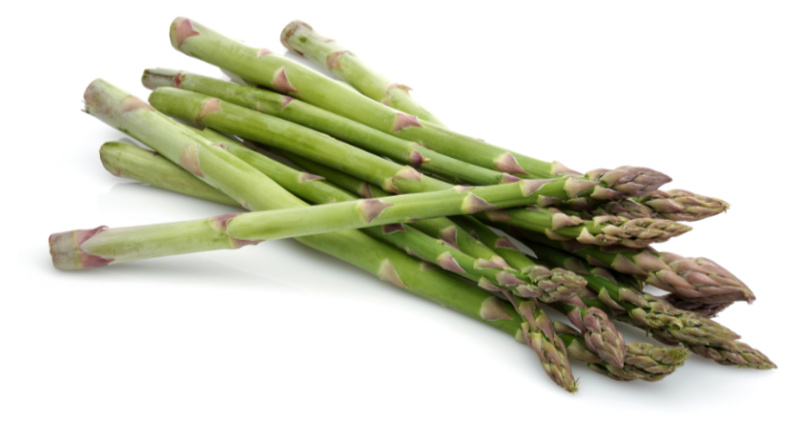
9. Dandelion greens
It may be the blight of many a garden, but this humble weed packs a huge amount of inulin. It’s best to pick leaves when they are tender, and then add them chopped to foods such as a salad as part of a healthy gut diet to ensure you get your daily dose of prebiotic foods. Take care to avoid any leaves that have been exposed to weed control pesticides, and always wash and properly prepare prebiotic foods before eating.
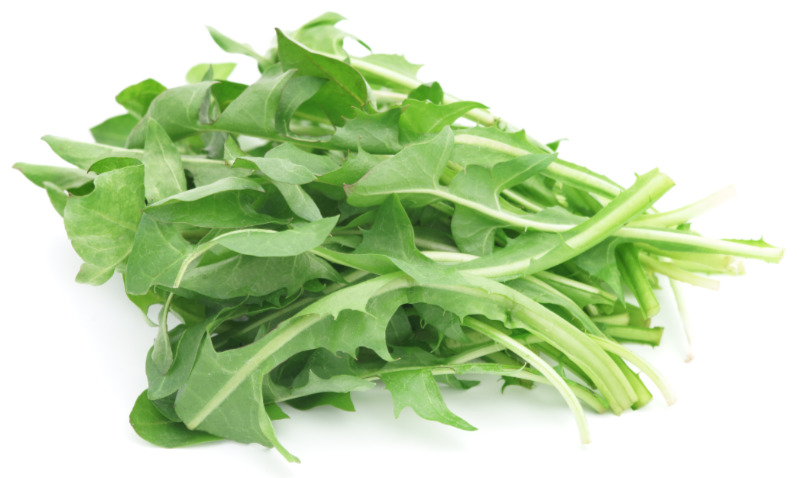
10. Chicory root
For many, the chicory root is the king of fibre. Nearly two-thirds of the chicory root is fibre by weight, making it one of the best prebiotic foods you can eat. With the highest level of inulin concentration of all plants, it can help relieve constipation, help digest fats and improve digestion. One tip is to try it roasted as a coffee substitute to get you inulin fix in liquid form.
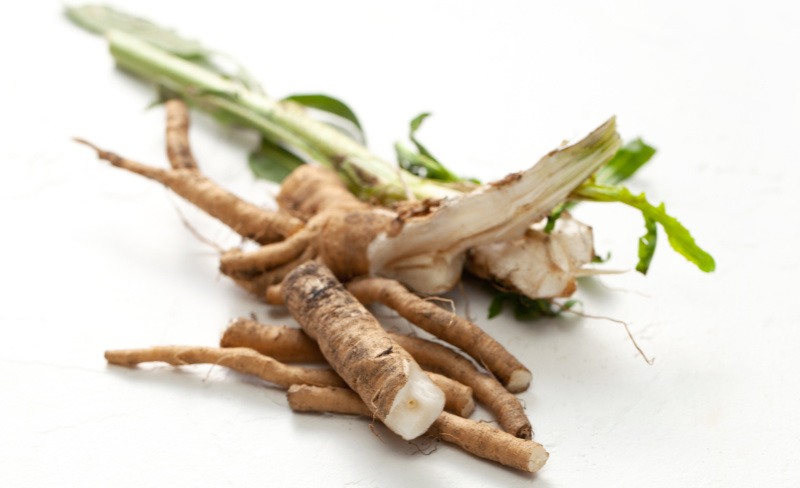
Suffering from menopause symptoms? Read our guide to 10 essential supplements that can tackle menopause symptoms.























































